Inside the Old and New Worlds of Atlantic Crossing
Great Britain often monopolizes the conversation around royalty. But the new epic drama Atlantic Crossing (PBS Masterpiece) centers on another set of royals, Norwegian Crown Prince Olav (played by Tobias Santelmann) and Crown Princess Märtha (Sonia Helin), as they flee their neutral homeland under the threat of German invasion. Inspired by true events, the saga spans the years of 1940 to 1945 as the prince moves to Buckingham Place and the courageous princess flees to America with her three children in tow, looking to her special friendship with President Franklin D. Roosevelt (Kyle MacLachlan) for refuge and eventual aid to her country.
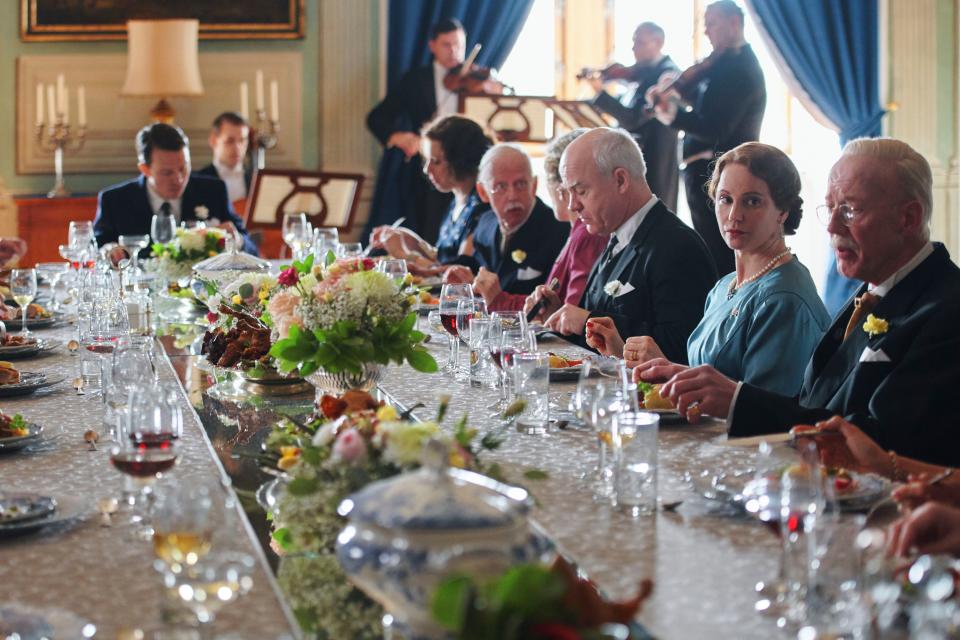
Considered one of the biggest productions in Scandinavian history, this show presented Danish production designer Jette Lehmann with the daunting challenge of designing various distinctive locations, from the family’s Norwegian home of Skaugham Castle and summer palace in Sweden to the more familiar environs of Buckingham Palace and the White House. Primarily filmed in the Czech Republic (which boasts thousands of lavish castles), the task at hand for the designer, art director Kindra Koci, and set decorator Karel Vaňásek was to “find mid-European locations that could be simple American interiors as well as depict the war,” Lehmann tells AD.
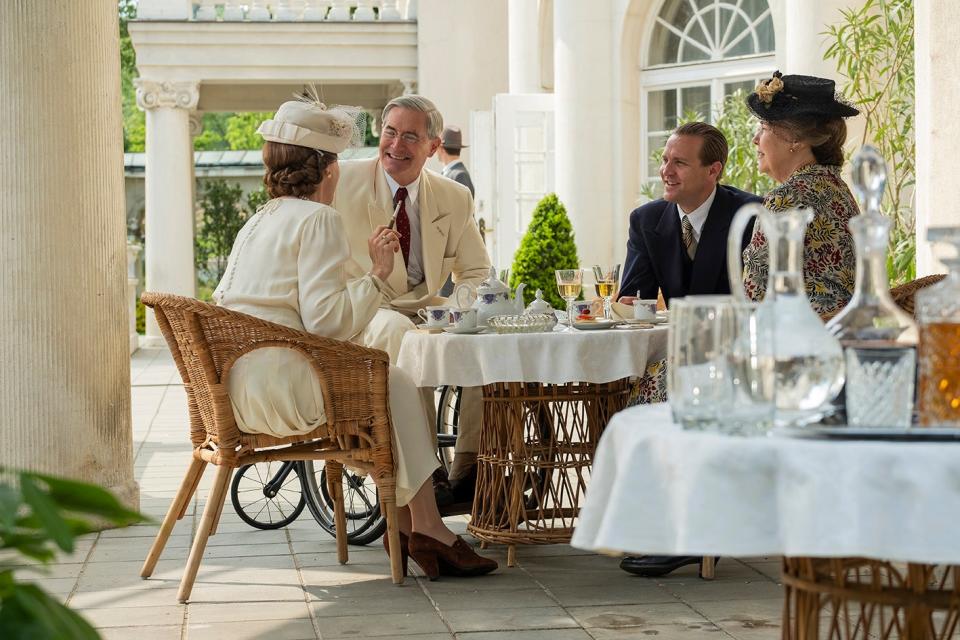
Utilizing color, texture, climate, and space, the designer details, “the challenge was how to set the palaces apart.” Her approach was to create a feeling of ice, snow, the cold climate, and rough terrain against a blue and gray color palette in a land of picturesque landscapes and never-ending forests for the royals’ Norwegian castle of Skaugum. As a contrast, King Gustav’s summer Swedish castle (where the Princess and her family find refuge before their journey to America) was filmed at the Zamek Litomyšl. Known for its mix of 18th-century Baroque designs and Italian Renaissance style, the UNESCO site dates back to 1568. “The interiors are a bright mix of whites, greens, and classic Swedish style that has not changed, and there are still some beautiful villas and castles that look the same over the years,” she notes.
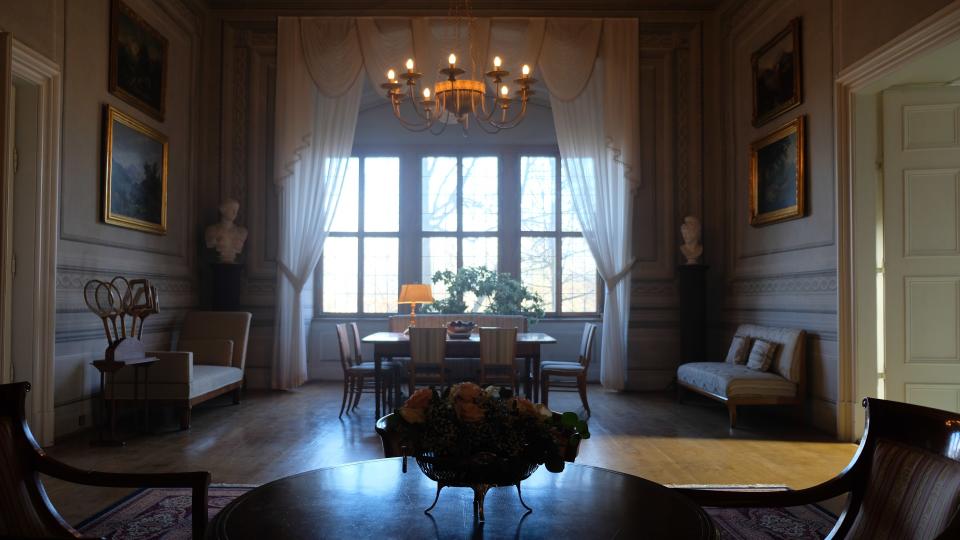
Dividing the interiors into the Old and New World, Lehmann notes, “The U.K. sets represent the Old World. We used a color palette of browns, golds, and reds with a touch of dust and worry that surrounds Olav.” As many production designers have found before (witness The Crown), the British monarchy’s residence is not welcoming to film productions. “Buckingham Palace was very hard to get any information, so we had to rely upon official pictures. We knew it had more than 500 rooms, but photographs were all we had access to.” The Archbishop’s Chateau in Kromêříž Castle serves as the location, with interiors shot in various palaces and villas in the country. Locating appropriate royal rooms with classic gilt embellishments was also a challenge, as yellow is now the trendy palatial color.
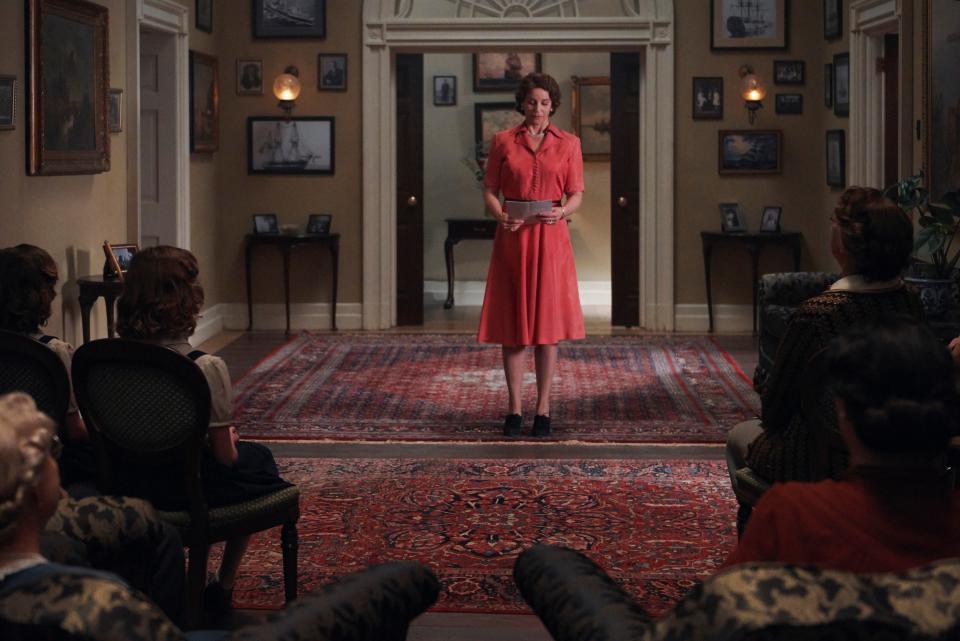
Representing the New World, the U.S. sets are filled with light and color as a metaphor for hope and new beginnings. With its identifiable white columns and portico, the White House exterior was filmed at the Empire-style Zamek Kacina, known as the Museum of the Czech Countryside, with interiors on a soundstage. Unlike that of its London counterpart, Lehmann’s research of 1600 Pennsylvania Avenue was vast, including a deep dive into Roosevelt’s 12-year tenure through archival photographs. “The White House is very presidential but at the same time not as posh as we see today; it was much more of a home than an official residence. You could tell Eleanor had a love for flowers as seen in the furniture, and pictures of the family were everywhere.” One of the key sets was a swimming pool the 32nd president built for his physical training. While authenticity is always crucial, the design team did not create an exact replication of the interiors; as Lehmann explains, “We let ourselves be inspired because there is only so much of what you can actually find furniture-wise.”
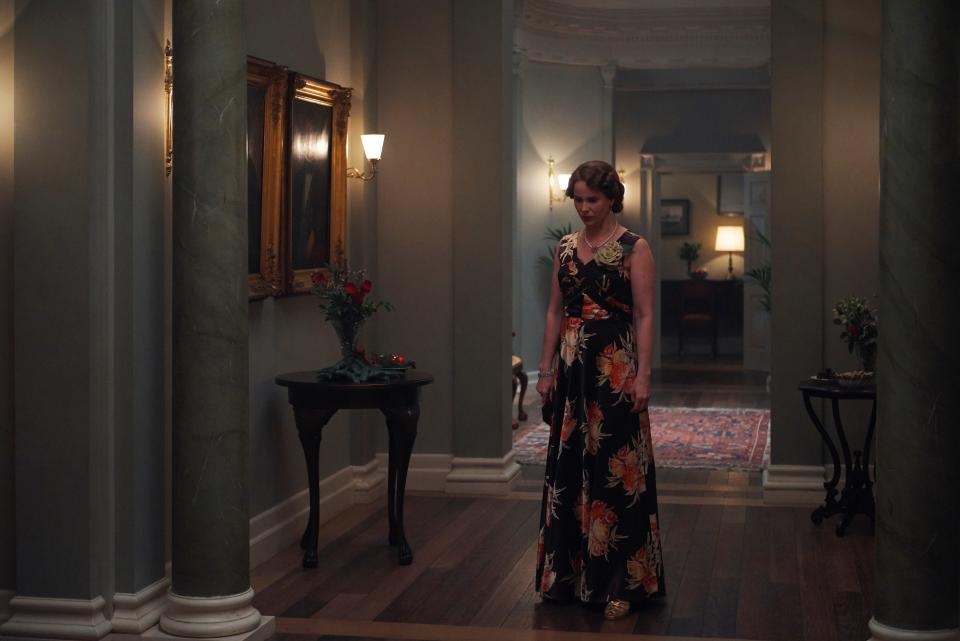
Princess Märtha and her family eventually settle into a Cubist-style house in Washington, D.C., known as Pooks Hill. “Märtha is intrigued by her new surroundings and makes her new home different from her former royal residences. Flowers and cool pink pastels characterize this newfound expression,” details Lehmann. For the interiors, the designer was influenced by Scandinavian artists such as Finnish painter Helene Schjerfbeck, and intrigued by the Cubist architecture and styles that depict the princess’s new attitude and life. Filmed at architect Jan Kotêra’s chateau near Prague, the neoclassical-style estate was the former home of the Madelik family that the German SS occupied in 1945. Today it is a luxury hotel, designed with the architect’s furniture line and the works of 20th-century notables Adolf Loos, Pavel Junak, and Marcel Kammerer.
Originally Appeared on Architectural Digest

